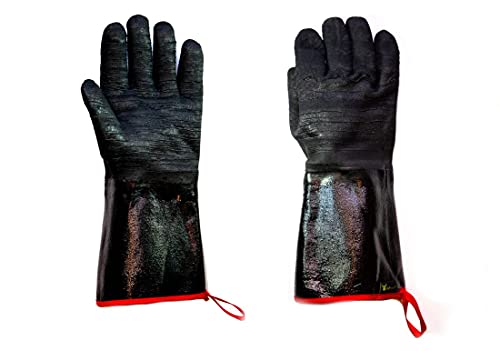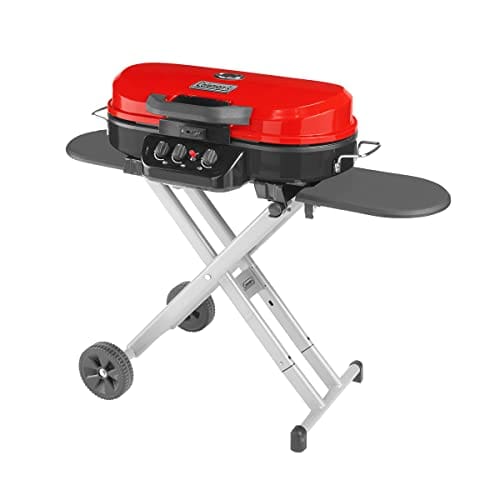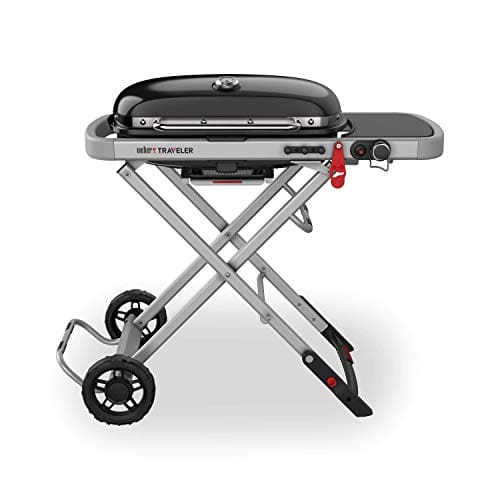How to ensure proper heat distribution in a smaller grill?
If you own a smaller grill, you may have noticed that heat distribution can be uneven, leading to unevenly cooked food. To help you overcome this problem, our step-by-step guide “How to ensure proper heat distribution in a smaller grill?” provides you with practical tips and techniques. By following this guide, you will learn how to maximize the heat efficiency, position the food correctly, and make adjustments to achieve even cooking. Say goodbye to burnt spots and undercooked food on your smaller grill!
Compact Grills for Easy Outdoor Cooking
Choose the right size grill
To ensure that you have the right size grill, consider the amount of cooking space you actually need. If you frequently cook for a small group or have limited outdoor space, opt for a smaller-sized grill. For example, a compact charcoal grill with a cooking surface of around 200-300 square inches would be suitable for your needs. This size grill will distribute heat evenly across the smaller cooking area, ensuring that your food cooks properly.
Another option to consider is a portable propane grill. These smaller-sized grills, like the Weber Q series, are perfect for camping trips or tailgate parties. They typically have a cooking space of around 180-280 square inches, making them easy to transport and store.
Remember, choosing the right size grill will not only ensure even heat distribution but also save you space and make your grilling experience much more enjoyable.
Preheat the grill
To preheat your grill, simply turn it on and set it to the desired temperature. Allow the grill to heat up for about 10-15 minutes, or until it reaches the desired temperature. This will ensure that the heat is evenly distributed across the cooking surface, making for more consistent and delicious results.
Arrange the charcoal or burners
To arrange charcoal for a charcoal grill, spread it out evenly in a single layer on the grill grate. Make sure the coals are arranged in a way that allows for even heat distribution. For gas grills, ensure that the burners are evenly spaced and turned on to the appropriate heat setting according to your recipe or desired cooking temperature.
Use direct and indirect heat zones
To create direct and indirect heat zones on your grill, start by placing charcoal or turning on the burners on one side only. This will establish different temperature zones for cooking various types of food. Position the food directly over the heat source for direct grilling, or place it on the opposite side for indirect grilling. Adjust the cooking time and heat levels accordingly to achieve the desired results.
Maintain proper airflow
To ensure proper airflow during grilling, start by checking that the vents on your grill are open and properly adjusted. Open the vents fully to allow for maximum air circulation. Adjust them as necessary to control the amount of oxygen reaching the fire. This will help distribute heat more evenly throughout the cooking area, resulting in perfectly grilled food.
Rotate and flip the food
To ensure even cooking, regularly rotate and flip your food. This helps to distribute the heat evenly and prevents any hotspots on the grill. Simply use a pair of tongs or a spatula to carefully turn over the food during the cooking process. Rotate it in a circular motion, ensuring that all sides of the food receive equal exposure to the heat. Repeat this step as necessary, depending on the cooking time and type of food being prepared.
Use a grill thermometer
Invest in a grill thermometer to accurately monitor the temperature of your grill. Place the probe of the thermometer in the center of the grill, away from direct heat. Adjust the heat accordingly based on the temperature reading to ensure even cooking and prevent over or undercooking your food.
Practice and experiment
To practice and improve your grilling skills, try experimenting with different techniques, temperatures, and cooking times. Start by varying the heat intensity on your grill, whether it’s using direct high heat for searing or indirect low heat for slow cooking. Additionally, you can try different cooking methods like direct grilling, indirect grilling, or even using a smoker. Remember to adjust the cooking time accordingly to achieve the perfect level of doneness for your food. Keep practicing and experimenting until you find the techniques that work best for your grill and the specific type of food you are cooking.
Ensuring even cooking temperatures
In conclusion, ensuring proper heat distribution in a smaller grill is crucial for achieving perfectly cooked meals. By following the tips provided in this guide, you can optimize the performance of your grill. Remember to choose the right size grill for your needs, preheat it thoroughly, arrange your charcoal or burners strategically, create direct and indirect heat zones, maintain proper airflow, rotate and flip your food, use a grill thermometer, and practice these techniques. By doing so, you can enjoy evenly cooked, delicious meals every time you fire up your smaller grill.
Necessary Equipment
Improving Heat Circulation
Controlling Heat on Your Charcoal Grill with Michael Symon | Symon’s Dinners Cooking Out | Food Network
Using a Smaller Grill with Ease
- Choose a smaller grill size that is suitable for your needs and space limitations. Consider factors such as the number of people you will be cooking for and the available space in your backyard or balcony
- Familiarize yourself with the grill’s features and functionalities. Read the user manual thoroughly to understand how to properly operate and maintain the smaller grill size
- Clean the grill grates before each use to ensure optimal cooking and prevent food from sticking. Use a grill brush to scrape off any residue and rinse with warm soapy water
- Preheat the grill according to the instructions provided, giving it enough time to reach the desired cooking temperature. This will ensure that your food cooks evenly
- Start with simple recipes and grilled ingredients. As a beginner, it’s best to start with basic grilled items like burgers, hot dogs, chicken breasts, and vegetables. This will help you get comfortable with using the smaller grill size and familiarize yourself with how it functions
- Practice proper grilling techniques, such as flipping the food only once, allowing it to sear and develop flavor, and avoiding excessive flipping or poking with utensils. This will help you achieve flavorful and beautifully grilled dishes
- Monitor the cooking time and temperature, as smaller grills may heat up faster and cook food more quickly. Keep an eye on your food to avoid overcooking or burning
- Don’t forget about safety precautions. Always use long-handled utensils, wear heat-resistant grilling gloves, and keep a fire extinguisher nearby. Make sure to place your grill on a stable and non-combustible surface, away from any flammable objects
- Clean and maintain your smaller grill regularly. Empty the ash catcher or drip tray after each use and make sure to give the grill a deep clean periodically to prevent grease buildup and extend its lifespan
Choosing the Perfect Compact Grill for Your Outdoor Space
Are smaller grills more portable and easier to transport?
Yes, smaller grills are generally more portable and easier to transport compared to larger grills. The compact size and lightweight design of smaller grills make them convenient for transportation. They are easier to lift, carry, and fit into smaller spaces, such as car trunks or camping gear. Additionally, smaller grills are more suitable for picnics, tailgating, and camping trips where portability is a priority. However, it’s important to note that the size of the cooking surface is also smaller on these grills, so you may have limitations on the amount of food you can cook at once.
How does the price of a smaller grill compare to larger grill sizes?
When it comes to grills, the price of a smaller-sized grill is generally lower compared to larger grill sizes. This price difference is primarily due to the difference in materials and overall construction required for larger grills. Smaller grills typically use fewer materials, have fewer burners or features, and require less manufacturing and shipping costs, leading to a lower price point.
Additionally, larger grills often come with more cooking area, additional burner options, and sometimes even advanced features like infrared burners or rotisserie attachments. These additional features contribute to the higher price of larger-sized grills.
It’s essential to consider your specific needs and preferences when selecting a grill. If you have a smaller outdoor space or cook for a smaller number of people, a smaller grill might be a practical and cost-effective choice for you. On the other hand, if you frequently entertain guests or require more cooking space, a larger grill might be worth the investment.
Ultimately, the price comparison between smaller and larger grills will vary depending on the brand, model, and specific features you desire. It is advisable to research and compare different options to find the grill size that best suits your needs and budget.
Can a smaller grill size still accommodate common grilling items like burgers, hot dogs, and vegetables?
Yes, a smaller grill size can still accommodate common grilling items like burgers, hot dogs, and vegetables. While larger grills may offer more cooking surface area, smaller grills can still effectively cook these foods.
For burgers and hot dogs, you can easily fit multiple patties or sausages on a smaller grill. You might need to cook them in batches, but they should still cook evenly and provide a delicious result.
Similarly, vegetables can be grilled on a smaller grill. You can use grill baskets or skewers to cook vegetables like bell peppers, onions, zucchini, or corn. These can be placed directly on the grill grates or in the baskets, ensuring they get the desired grill marks and smoky flavor.
Even though a smaller grill may not have as much space as a larger one, it can still serve up a tasty meal with the grilling items you mentioned. Just consider the size of the grill and plan accordingly to accommodate the number of items you want to cook.
























